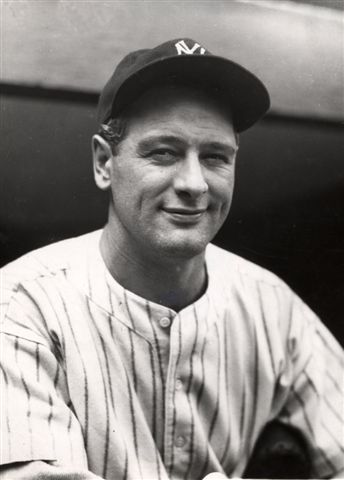Left Out: Handedness and the Hall of Fame
This article was written by Jon C. Nachtigal - John C. Barnes
This article was published in Fall 2019 Baseball Research Journal
 Handedness historically has been of importance to how the game of baseball is played. For example, professional baseball has long alternated players at the same position of varying handedness in order to gain a competitive advantage. That advantage—the platoon effect—is in play when batters hit better when facing pitchers who throw with the opposite hand of the batter’s side preference.1 This practice dates to at least 1886 when Chicago White Stockings manager Adrian Anson used the platoon effect to maximize the effectiveness of his batters.2
Handedness historically has been of importance to how the game of baseball is played. For example, professional baseball has long alternated players at the same position of varying handedness in order to gain a competitive advantage. That advantage—the platoon effect—is in play when batters hit better when facing pitchers who throw with the opposite hand of the batter’s side preference.1 This practice dates to at least 1886 when Chicago White Stockings manager Adrian Anson used the platoon effect to maximize the effectiveness of his batters.2
One study found 13.5% of baseball players threw left-handed while 30.3% batted with a left-sided preference.3 The overall percentage of left-handedness for men in the general population is just 11.6%.4 Left-handed throwing fielders who batted with a left-sided preference were found to hit more home runs, had higher slugging percentages, but also had more strikeouts than did right-handed throwing fielders who batted with a left-sided preference.5 The study’s authors theorized that performance differences were due to hand dominance or hand specialization in the batters’ swings.
In contrast, John Walsh proposed in The Hardball Times that performance differences in baseball based on throwing hand are largely due to positional bias.6 Right-handed fielders dominate four positions in baseball: catcher, second base, shortstop, and third base. This positional bias exists because these positions favor a right-handed thrower. The other positions in baseball, which include first base and the outfield positions, do not favor a player by throwing hand. Therefore, according to Walsh, weak-hitting players who throw right-handed but are exceptional defenders have opportunities to play positions that weak-hitting left-handed throwers are not afforded. As a result of positional bias, the overabundance of weak-hitting right-handed throwers may skew performance data and, as a result, make it appear that left-sided batters perform better overall than right-sided batters.
We can see this positional bias demonstrated in the records of the National Baseball Hall of Fame. Only eight players admitted to Cooperstown threw left, batted left, and played catcher, second base, shortstop, or third base. For all eight of these players, first base or outfield were their primary positions. The most recent player in that list, Lou Gehrig, was only listed at shortstop for one game in 1934 to keep his consecutive-games-played record intact and was removed before ever taking the field.7 Prior to Gehrig, left-hander Jim Bottomley, a career first baseman, appeared in one game at second base in 1924.8 That appearance lasted only one inning.9
Examining the handedness of position players in the Hall of Fame supports Walsh’s finding that positional bias, rather than intrinsic abilities associated with handedness, is largely responsible for the observed differences between right-handed and left-handed players.
JON C. NACHTIGAL, PhD, is an assistant softball coach at Purdue University Fort Wayne. He received a doctorate in sport administration from the University of New Mexico and has taught sport management at Simpson College and New Mexico. He publishes softball research at FastpitchAnalytics.com.
JOHN C. BARNES, PhD, is an associate professor in the sports administration program at the University of New Mexico. His book, Same Players, Different Game: An Examination of the Commercial College Athletics Industry, will be available in 2020. He holds a Bachelor of Science degree in physical education from California State Polytechnic University, Pomona; a Master of Science degree in kinesiology from University of Nevada, Las Vegas; and a PhD in sports administration from the University of New Mexico.
Notes
1. Bradbury, John Charles, and Douglas J. Drinen. “Pigou at the Plate.” Journal of Sports Economics 9, no. 2 (September 2007): 211–24.
2. Nawrocki, Tom. “Captain Anson’s Platoon.” The National Pastime, no. 15 (1995): 34–37.
3. Grondin, Simon, Yves Guiard, Richard B. Ivry, and Stan Koren. “Manual Laterality and Hitting Performance in Major League Baseball.” Journal of Experimental Psychology: Human Perception and Performance 25, no. 3 (1999): 747–54.
4. McManus, Chris. Right Hand, Left Hand: The Origins of Asymmetry in Brains, Bodies, Atoms and Cultures. London: Phoenix, 2004.
5. Grondin, et.al. “Manual Laterality.”
6. Walsh, John. “The Advantage of Batting Left-Handed.” The Hardball Times, November 7, 2007. https://www.fangraphs.com/tht/the-advantage-of-batting-left-handed.
7. “Biography—The Official Licensing Website of Lou Gehrig.” Lou Gehrig. Accessed August 25, 2019. https://www.lougehrig.com/biography.
8. “Jim Bottomley Stats” Baseball-Reference. Accessed November 23, 2018. https://www.baseballreference.com/players/b/bottoji01.shtml.
9. The 1924 STL N Regular Season Fielding Log for Jim Bottomley. Retrosheet. Accessed September 9, 2019. https://www.retrosheet.org/boxesetc/1924/Mbottj1010031924.htm.
10. All player stats from Baseball-Reference.com.
Table 1: Appearances for left-sided batters and throwers in the Hall of Fame who played Catcher/Second Base/Shortstop/Third Base
|
Name |
Bats |
Throws |
Years |
Appearances |
Appearances |
|
Jake Beckley |
Left |
Left |
1888-1907 |
1 |
2,389 |
|
Jim Bottomley |
Left |
Left |
1922-1937 |
1 |
1,885 |
|
Dan Brouthers |
Left |
Left |
1879-1904 |
2 |
1,671 |
|
Jesse Burkett |
Left |
Left |
1890-1905 |
3 |
2,054 |
|
Lou Gehrig |
Left |
Left |
1923-1939 |
1 |
2,146 |
|
Willie Keeler |
Left |
Left |
1892-1910 |
65 |
2,039 |
|
Edd Roush |
Left |
Left |
1913-1931 |
1 |
1,863 |
|
George Sisler |
Left |
Left |
1915-1930 |
5 |
2,009 |
Note: All statistics are from Baseball-Reference.com.


